As the coronavirus pandemic disrupted global supply chains, a new report released in April by the Information Technology and Innovation Foundation (ITIF) urged the U.S. government to develop a national industrial strategy to strengthen the competitive position of advanced, traded-sector industries that are “too critical to fail.”
“Even before this pandemic, China posed an unprecedented competitiveness challenge in the advanced industries that are most critical to America’s economic wellbeing and national security,” said ITIF President Robert D. Atkinson, the report’s author and a past contributor to Site Selection.
Atkinson is the founder and president of ITIF, a nonprofit, nonpartisan research and educational institute focusing on the intersection of technological innovation and public policy. His books include “Big Is Beautiful: Debunking the Myth of Small Business” (MIT, 2018) and “Innovation Economics: The Race for Global Advantage” (Yale, 2012). (For more, visit itif.org.)
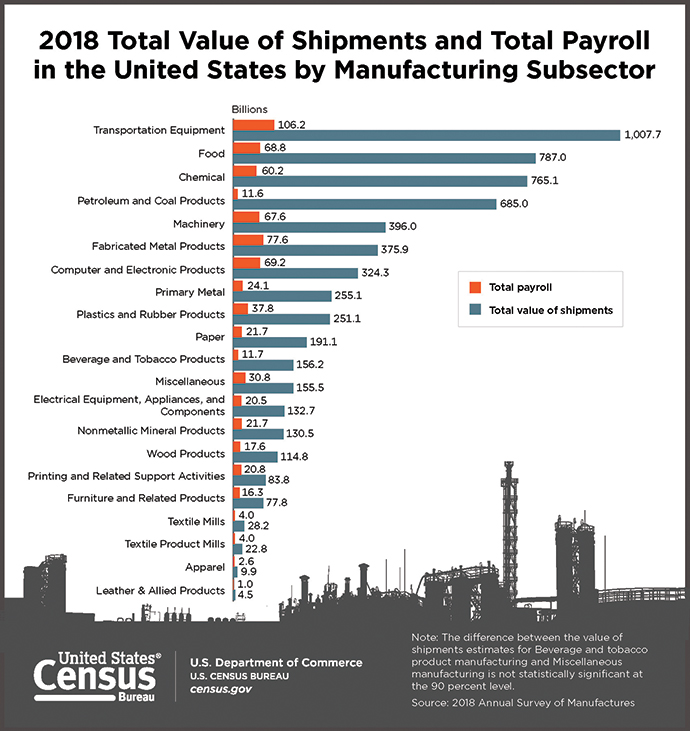
Why is advanced industry competitiveness important? Atkinson says advanced traded sectors account for 60% of U.S. exports. Moreover, workers in advanced industries earn 80% more than average, while workers without college degrees earn 57% more in high-tech industries. He says 35% of U.S. economic growth comes from 75 intellectual property (IP)-intensive industries. Strength in a broad array of advanced technology sectors makes it easier to respond to external threats to supply chains, either from natural disasters like pandemics, or from actions by other nations to intentionally harm or exert leverage over the United States. And finally, advanced traded sectors and many of the technologies associated with them are critical to America’s ability to field a robust military force.
The U.S. Competitiveness Challenge
Atkinson points to several indicators of the country’s competitiveness challenge, including a 13% decline in real manufacturing value added between 2007 and 2019, and an all-time-high trade deficit of $122 billion in advanced technology products in the first 11 months of 2019, down from a $4.5 billion trade surplus in 2001. With China, the trade deficit in electronic products was $184 billion in 2017, with the U.S. exporting just $21 billion to China.
The report specifically calls on Congress to task the administration with creating a national industrial strategy that focuses on bolstering the competitive position of technologically sophisticated, traded-sector industries such as aerospace; semiconductors and computers; transportation equipment; biopharmaceuticals and other chemicals; advanced machinery and automation; software; and instruments. Among the report’s recommendations:
Congress should task the administration with creating a national advanced industry strategy, as Sens. Chris Coons (D-DE), Jeff Merkley (D-OR), Marco Rubio (R-FL), and Todd Young (R-IN) have proposed. In addition, the White House should create a national industrial intelligence unit within the National Intelligence Council to better assess competitive challenges to the U.S. economy and coordinate responses across government. At the same time, Congress should charge the director of national intelligence to ensure the focus on Chinese economic competition and strategy becomes a higher priority within the intelligence community.
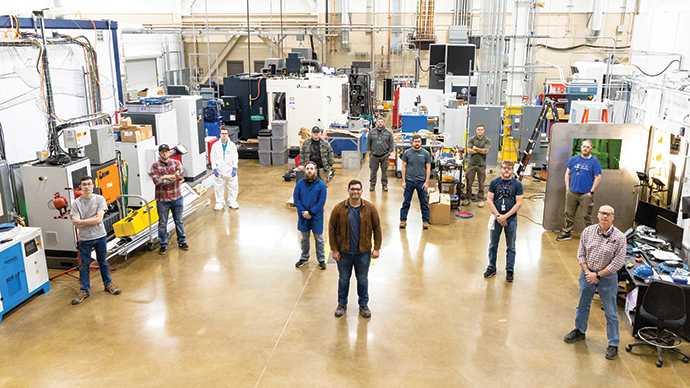
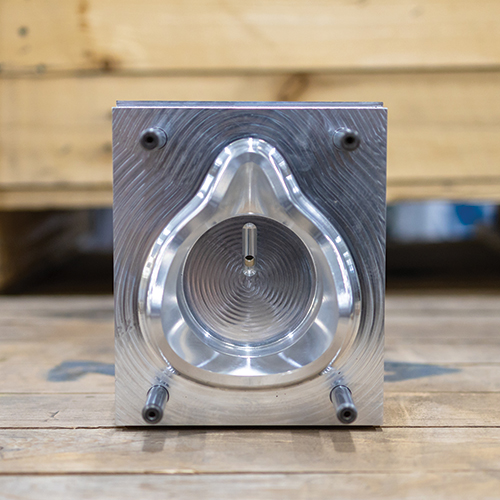
Congress should establish a unit within the National Institute of Standards and Technology (NIST) to monitor and analyze U.S. domestic production capabilities in advanced industry sectors and their supply chains. “To be effective, this unit should develop deep specialized expertise in the key industries and technologies America must be competitive in,” Atkinson writes. “It should also be involved with decisions to accept or block Chinese investment in the United States (through the Committee on Foreign Investment in the United States [CFIUS] process) and in decisions to impose export controls through the Bureau of Industry and Security. This capability should be supplemented by assessments of key competitiveness foundations, such as workforce skills, capital markets (including pressures toward investment short-termism), physical infrastructure, and the technology innovation and commercialization system.”
Congress should significantly expand funding for research related to key technologies, including, among others, artificial intelligence, biopharmaceuticals, robotic and autonomous systems, and semiconductors, and target it to maximize commercialization of these technologies in the United States. “Federal R&D has not kept up with GDP growth, and as a result is lower as a share of GDP than prior to Sputnik,” Atkinson writes. “To match the levels of the 1980s, funding would need to increase by over 80%, or about $100 billion per year. But simply giving this money to federal labs and research universities would not be enough.”
He suggests support be linked to expectations, incentives and requirements for commercialization and production domestically, regardless of where the company is headquartered. This means, among other things, investing in agencies and programs such as DARPA and Advanced Research Projects Agency–Energy (ARPA-E), National Science Foundation’s (NSF) Industry/University Cooperative Research Centers program, and the Manufacturing USA network (see p. 108). “In particular, the Manufacturing USA network should be expanded from 15 institutes to closer to 45,” he says. “Congress should also increase funding for the Semiconductor Technology Advanced Research Network (STARnet) — which is a collaboration of universities providing exploratory research on semiconductor system and design technology — as well as establish at least 10 to 15 similar networks for other industries.”

“We are hopeful that governments around the world will follow the lead of the U.S. and support their aviation industry in a similar fashion. In addition, the U.S. government can now turn its attention to the manufacturing base that supports the global air travel industry.”
Finally, he says one reason the United States responded effectively to the Japanese technological challenge of the 1980s and ’90s is that U.S. firms embraced software and the rise of the Internet — technologies enabled in large part by the federal government focusing on key missions, including space and defense. “This means, going forward, major new government missions should be a big part of any industrial strategy. There are many that could qualify, including space exploration, addressing the aging challenge, cybersecurity, climate change, productivity, and of course, pandemic response.”
Congress should establish a Competitiveness Tax Credit, providing a tax credit of 45% of all business investments (domestic or foreign) made in the United States in R&D, skills training, and global standards setting, and a 25% credit for expenditures on new equipment and software, with expenditures in excess of 75% of base-period expenditures qualifying for the credit. Why? “Business investment in R&D, new equipment and software, global standards setting, and workforce training drives advanced industry competitiveness,” Atkinson writes. “However, United States has fallen behind other nations in investment in these key building blocks in the last decade. Moreover, unfair Chinese competition in innovation industries has and will continue to negatively impact U.S. business R&D investment, in part as Chinese companies competing unfairly drive down margins for companies in the United States.”
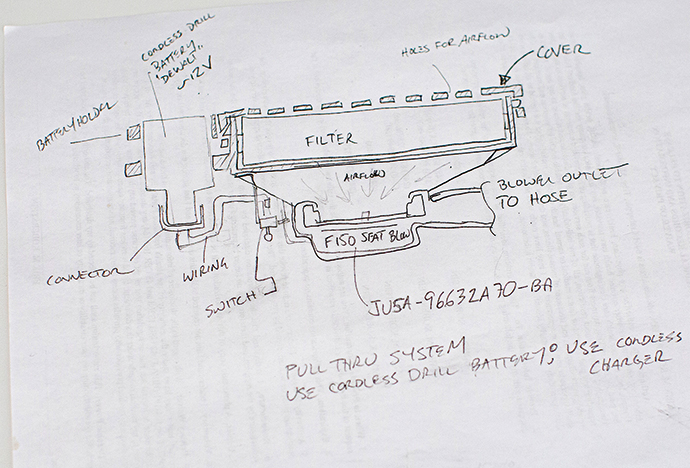
Congress should support the establishment of an industrial investment bank to drive advanced production scale-up in America. Atkinson suggests Congress also could create an EXIM-like bank to support domestic investment, perhaps modeled on KfW, a German government-owned development bank. “Congress should also create an industrial retention and recruitment fund — matched by state governments — to provide incentives for investments in production facilities in key industries and technologies in the United States,” he writes. “For example, other nations have programs — such as Singapore’s Economic Development Board and the Irish Development Authority — that provide incentives to attract key forms of industrial activity to their borders. Congress should significantly expand DOD’s loan and loan guarantee authority in Title 3 of the Defense Authorization Act. Finally, Congress should establish a reshoring incentive fund to provide financial support for firms in critical industries to relocate production now in China to the United States. This could be modeled after a similar program recently introduced by Japan.”
These efforts should be coordinated with our allies, and as such, the federal government should work to establish a joint U.S.-EU-Japan Technology Alliance. “Given the complexity of the existing and emerging technology system, even an economy as large as that of the United States cannot hope to be a global leader in all key technologies,” Atkinson says. “But it can hope that, collectively, America and its allies are leaders. In this sense, the United States needs not just a national industrial strategy, but an allied industrial strategy to ensure, as a group, allied, democratic nations have the ability to produce innovative products at competitive prices in a set of key areas … Such an alliance would be especially important to help convince European policymakers that any talk of ‘digital sovereignty’ should not be focused on the United States, but rather on China.
“The widespread belief that the U.S. recipe of free markets, property rights, and entrepreneurial spirit is enough to guarantee U.S. success — and the only valid recipe for innovation success — is ahistorical and naïve,” Atkinson writes. “These never were the only — or even principal — ingredients in the U.S. competitiveness recipe; robust government funding of R&D, tax incentives, defense technology initiatives and other policies have played a key role. But other nations, especially the Asian Tigers and China, have made it clear the U.S. recipe is not the only valid one for producing prosperity.
“The only hope for ensuring the United States doesn’t continue to lose its competitive position in advanced technologies is for Congress and the administration to develop and implement a robust industrial strategy focused on those industries,” says Atkinson. “The alternative would be a steady erosion of the country’s competitive position — akin to the path the United Kingdom took in the 1960s and 1970s — and an emboldening of populists who will claim protectionism and anti-corporate policies are the only way to preserve key economic capabilities.”
Though Atkinson writes that “two decades of hyper-globalization have reduced the commitment of U.S. companies to a robust national competitiveness strategy,” he notes that Intel and HP were among the leaders in promoting advanced industry policies before such hyper-globalization took hold, helping to form the public-private Sematech consortium, among other steps. While such enthusiasm has waned, more firms and economists today are recognizing the power of government-backed R&D and competitiveness measures.
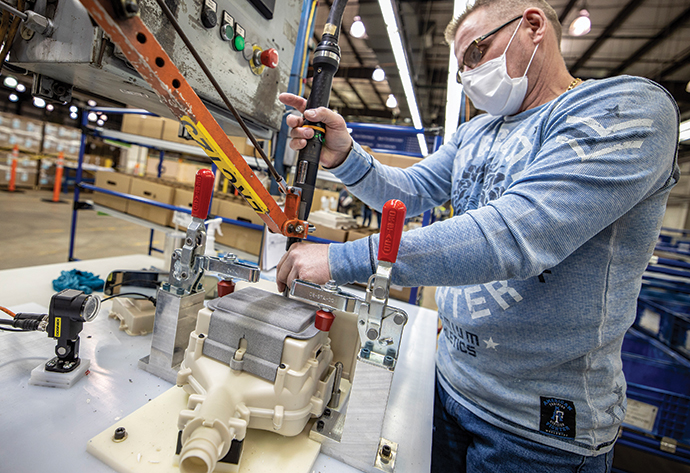
“In addition, the COVID-19 crises has been a wake-up call to many Americans about just how dependent the United States is on China, especially for key medical supplies, prompting calls for action to increase U.S. production capabilities,” Atkinson says.
Just leaving things alone and letting “the market” sort it out is not enough, he posits. In fact, “when a growing number of nations, especially China, are engaged in ‘innovation mercantilist’ policies and practices, leaving it to the market runs the real risk of the United States specializing in low-value-added, commodity-based production,” he writes. “This is why, as Joe Studwell described in his book ‘How Asia Works,’ the only way ‘Asian Tigers’ such as Taiwan and South Korea could move up the industrial value chain was for them to embrace national industrial strategies. Given that in some industries the United States is now more like an emerging market in that it has lost core production capabilities in certain areas, it too needs a national industrial strategy if it is to regain at least some of that needed production capability.”
Semiconductors Are Small. Their Impact Is Huge.
As it happens, Taiwan Semiconductor Manufacturing Company (TSMC) is making a mammoth bet on U.S. production and competitiveness even without a national U.S. industrial strategy in place. In May, the manufacturing giant pledged to invest $12 billion and create 1,600 jobs at a new semiconductor manufacturing facility in Greater Phoenix, with a final location yet to be determined.
“TSMC could have picked any place in the world to build this advanced manufacturing factory,” said Arizona Governor Doug Ducey. “They chose Arizona for our unbeatable business climate, already thriving tech sector and ready access to an international supply chain. I’d like to thank TSMC Chairman Dr. Mark Liu for his commitment to Arizona. We are honored to be selected for this project and look forward to building a collaborative long-term relationship with TSMC.
“This plan is the result of years of close collaboration among TSMC, the Governor of Arizona and his staff, and the Administration, particularly our Assistant Secretary of Commerce Ian Steff,” said U.S. Commerce Secretary Wilbur Ross, crediting the Trump administration’s achievements on tax cuts, deregulation, workforce development and high-tech innovation for laying the foundation for these types of capital-intensive investments in semiconductor design, R&D, and manufacturing. “This Administration,” said a Department of Commerce release, “is committed to ensuring the United States has a secure, vibrant and internationally competitive high-tech ecosystem, buttressed by domestic chip production.”
3-D Printing Makes Multi-Layered Impact
Erin O’Donnell is director of Strategic Partnerships & Community Relations at America Makes, the national accelerator for additive manufacturing and 3D printing that was established in 2012 in Youngstown, Ohio. Managed and operated by the National Center for Defense Manufacturing and Machining (NCDMM), America Makes is the flagship Institute for Manufacturing USA, the National Network for Manufacturing Innovation. And there’s never been a better time to wave the flag of additive manufacturing, as companies manufacture solutions to battle COVID-19 on multiple fronts.
“Seeing how quickly manufacturers stepped up and changed their capabilities or manufacturing systems in response to COVID-19 was unbelievable,” O’Donnell says of changes that sometimes were made between switching off the lights one night and switching them back on the next morning. “It was instrumental. Everything I’ve heard was about people and manufacturers coming to assist — part of the America Makes program is bringing competitors together to improve the technology. It was the most impactful thing I’ve seen since the COVID-19 pandemic started.”
The innovative approaches to ventilator and mask production have come from all corners: universities such as MIT, Rice, the University of Florida and the University of Vermont; incubators such as New Lab at Brooklyn Navy Yard; government agencies such as NASA; and corporate coalitions such as Ford’s “Project Apollo” with GE Healthcare and Airon and GM’s Project V with GE Healthcare, Ventec and Hamilton Medical.
Layers of advanced supply chain can contribute as much as layers of additive material. As documented by The New Yorker’s James Somers in an interview with GM Head of Global Manufacturing Gerald Johnson, GM needed to source around 700 parts for one ventilator and 400 parts for another. “By emailing lists of parts to around 70 of its Tier 1 suppliers,” Somers reported, “GM was able to secure all of them by the following weekend,” with one supplier to a supplier actually reopening a shuttered factory to produce a DC motor.
But 3D was key.
“3D printing helps us design and build parts and products faster and in ways we previously couldn’t,” said Kevin Quinn, GM director of additive design and manufacturing, in a June 18 release from GM. “It’s already having a positive impact on how we develop and build vehicles, like Corvette, and it’s allowed us to apply our mass production expertise to medical supplies and devices.”
“We could not have responded to the coronavirus as quickly as we did without 3D printing,” said Ron Daul, GM director of additive manufacturing. “The investment in both our additive manufacturing facilities and training the team to leverage 3D printing for development has enabled us to pivot to making ventilators and personal protective equipment virtually overnight.”
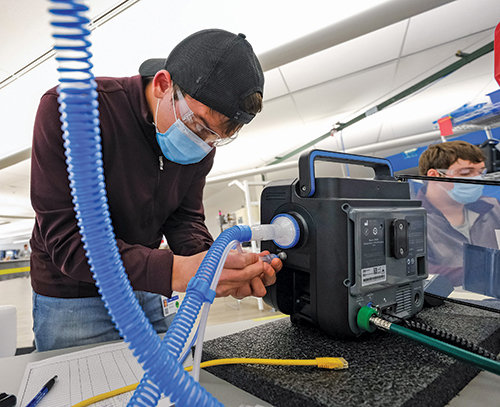
Nearly all tools used to assemble the ventilators are 3D printed. Most are 3D-printed “nests” or fixtures that hold parts in place during assembly at GM’s facility in Kokomo, Indiana, as well as Hamilton Medical’s plant in Reno, Nevada, GM explains. Those nests are reverse engineered from part data received from Ventec in Seattle and Hamilton in Switzerland.
“3D printing allows us to make constant, rapid changes to fixtures based on feedback from the assembly teams,” said Dominick Lentine, GM senior manufacturing engineer, additive applications. “We can receive feedback from Hamilton, improve a part and have it flown back to Reno in less than 24 hours.”
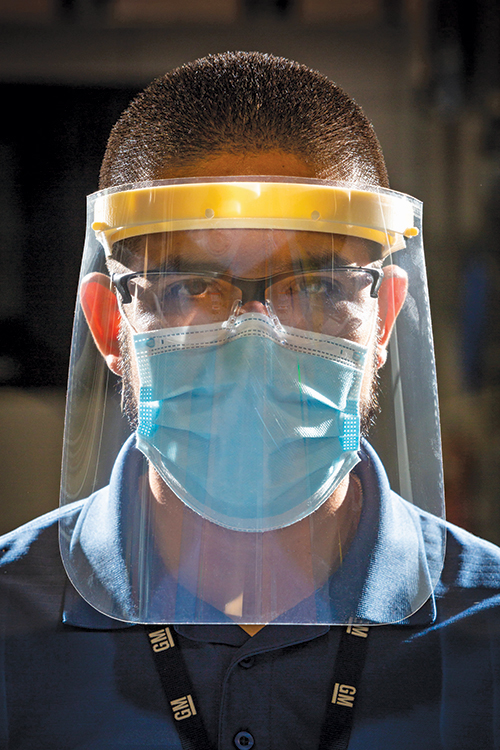
To further increase the speed of response, teams from GM’s Additive Innovation Lab and Additive Industrialization Center, both in Warren, Michigan, delivered and installed 3D printers from their respective facilities to the Kokomo plant to print new hand tools onsite. The Additive Innovation Lab opened last year in the Cole Engineering Center inside GM’s Global Technical Center in Warren. “Easily accessible to tens of thousands of employees, GM’s engineers, designers and other team members can learn how to operate the 3D printers and software, convert files into physical parts and then process these parts,” the company explains. To date, more than 700 employees have been trained there.
More Visible in More Places
America Makes’ Erin O’Donnell says one of the reasons additive has taken center stage is its quick migration from something many viewed as a nice toy for making trinkets in university labs to its use by major global corporations in making everything from medical devices to power plant turbines. O’Donnell recalls a recent visit to Oak Ridge National Laboratory where leaders were updating her on nuclear power capabilities with 3D printing. And this spring one DoD effort saw the first 3D-printed helicopter part literally take flight.
“The program has changed drastically — it’s easily visible,” she says. “When America Makes started eight years ago it was research and trying to bring awareness. But then we were able to take that to another level, with machines doing it better and faster. Last year the NFL approached us about how to make a safer helmet — we had a symposium in November. People often don’t relate it to anything but trinkets. Now they see a helmet, or a part on a plane. It’s a visual evolution of where additive is going.”
Since each state had its own process and plan in response to COVID-19, she says one of her next goals is to develop a playbook drawn from all states’ responses that will help when the next disaster strikes, so people know, for instance, which Manufacturing Extension Partnership (MEP) program has which specific capabilities.
She also anticipates continuing to work with partners to develop satellite centers for America Makes. The University of Texas-El Paso was first, followed by Texas A&M and Wichita State University, each with its own specific area of focus. “If I had my choice,” she says, “I’d put one in every state.”


